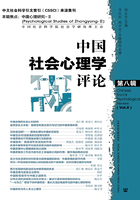
Unexpressed Pleasure, Anger, Sorrow and Joy: The Implementation of Zhongyong Thinking Mode through Attentional and Memory Processing of Emotional Stimuli
Wang Manying Department of Psychology, Soochow University
Lin Shujing User Experience Design, Taobao
Yeh Yeiyu Department of Psychology, Taiwan University
Abstract: One of the core elements of zhongyong thinking is the regulation of emotion and the pursuit of ideal affect. When dealing with daily events, zhongyong thinking prompts individual to pause for systematic consideration of relevant conditions before taking actions in order to optimize solutions and to facilitate the pursuit of internal peace. An interesting question is how zhongyong thinking is implemented by the moment-to-moment fluctuation of attention and memory processing. This study examines this question by manipulating age and the valence and arousal of the cue in the spatial cueing paradigm. It was assumed that the emotionality of stimuli elicited zhongyong related construal that, in turn, primed the emotion regulation goal of emotion neutral point or“zhong”maintenance as well as the emotion goal of low arousal/positive affect. Participants' memory recognition performance was also recorded after the cueing task. It was expected that the attentional performance in participants of high zhongyong thinking is not affected by valence or arousal of the cue so that they could remain neutral on a timely basis. Their memory performance, on the other hand, was expected to demonstrate positive bias for low arousal cues, supporting their emotion goal. In addition to supporting these predictions, we also found attentional biases for low zhongyong participants. Their positive attentional bias for low arousal cues were attributed to the difficulty in disengaging from negative cues. The positivity effect(Carstensen, Isaacowitz, &Charles, 1999)was found for the attentional(disengagement)performance of low arousal cues. On the other hand, “negativity”, not positivity effect was exhibited for memory performance. These positivity and negativity effects were due to the contribution of low zhongyong participants. Additionally, the patterns of emotional biases bear resemblance between older participants and low zhongyong participants as well as between younger participants and high zhongyong participants. These findings suggest that high zhongyong individuals may maintain emotional neutral point or“zhong”by avoiding the attentional selection of negative stimuli. Consequentially, better memory would be established for low arousal/positive stimuli, fulfilling the emotion goal of zhongyong thinking related construal.
Keywords: Zhongyong Thinking Mode, Valence, Arousal, Positivity Effect, Selective Attention, Recognition Memory